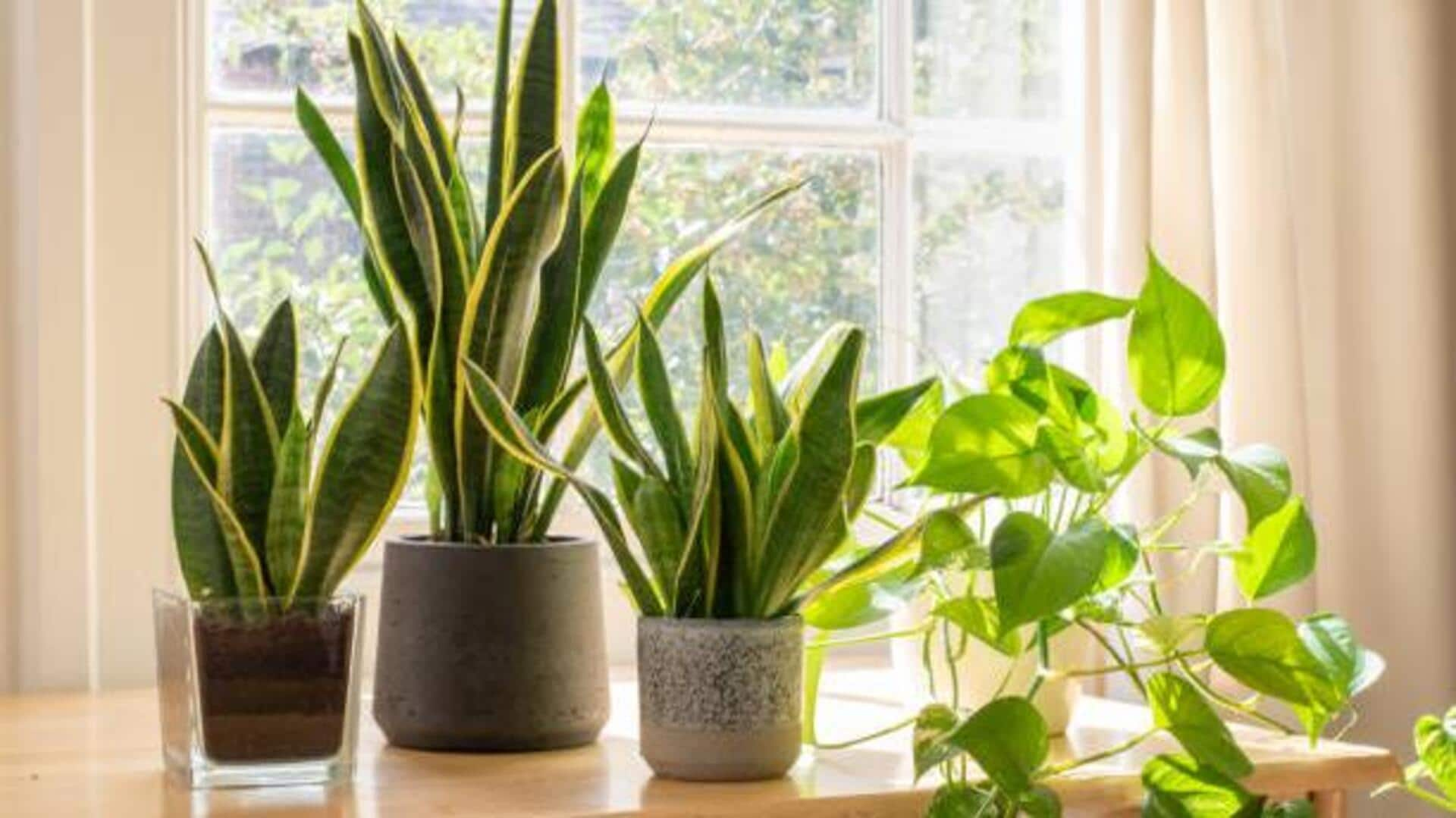
How to care for indoor plants
What's the story
Indoor plants are a great way to liven up your home, but keeping them healthy can be a task. One of the most common problems is overwatering, which can cause root rot and other problems. Knowing how to keep your plants hydrated without overdoing it is key to keeping them healthy. Here are five practical tips to help you prevent overwatering and keep your indoor plants healthy.
Tip 1
Use well-draining pots
Choosing pots with good drainage is essential to avoid overwatering. Pots with drainage holes allow excess water to escape, preventing the roots from sitting in moisture. This is especially important for plants that prefer drier conditions. Using well-draining pots helps maintain the right moisture levels in the soil, promoting healthy root development and preventing common issues like root rot.
Tip 2
Check soil moisture regularly
Regularly checking soil moisture is key to knowing when to water your plants. Stick your finger about an inch into the soil; if it feels dry at that depth, it's time to water. This simple test helps you avoid watering on a schedule and, instead, focus on the plant's actual needs. Different plants have different moisture requirements, so adjust accordingly.
Tip 3
Adjust watering frequency seasonally
Indoor plants' watering needs change with seasons. In warmer months, plants may need more frequent watering due to higher temperatures and increased light exposure. In cooler months, when growth slows down, you may need to reduce the frequency of watering significantly. Observing changes in your plant's appearance can also guide adjustments in your watering routine.
Tip 4
Use appropriate soil mix
The right soil mix can make a world of difference in how well your indoor plants drain. A mix designed for good drainage, like cactus or succulent soil, can keep moisture levels just right for plants that don't like soggy roots. Using the right soil mix keeps the plant's roots healthy and prevents overwatering.
Tip 5
Implement proper drainage techniques
Proper drainage techniques are key to preventing waterlogging in potted plants. Placing a layer of small stones or gravel at the bottom of pots can improve drainage by allowing excess water to flow out easily. Additionally, using saucers under pots collects any excess water that drains out, preventing damage to surfaces while still allowing air circulation around roots.